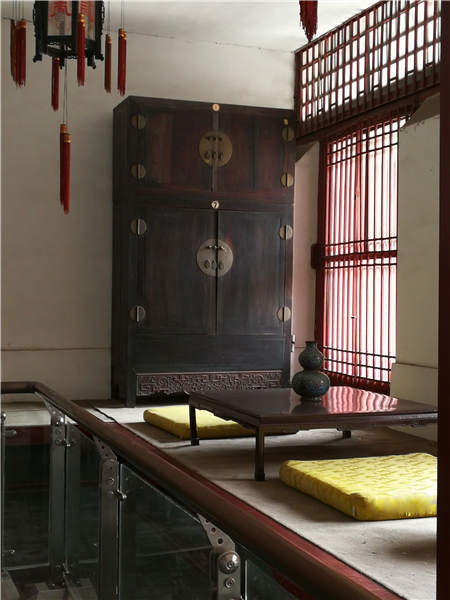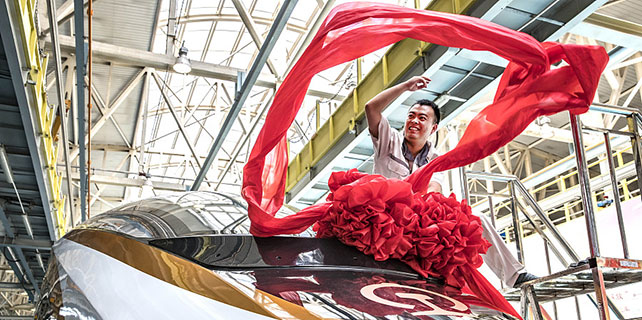The warrior emperor and the five phoenixes
 |
|
The interior of Guanju Palace, the abode for Harjol. |
Take Harjol's one for example: the interior of the palace is composed essentially of an outer section and an inner section. The outer section features a table and cushions, a Buddhist shrine and two big closets, all placed on a bench that surrounds the entire room. Here prayers were said and guests received. According to my guide, the top layers of the closets were always kept empty, to symbolize plenitude.
Also in this section are two pots, set into the bench. They were not used for cooking but for boiling water to increase humidity in Shenyang's cold, dry winters.
The interior of the palace was the resting area, with a bed (for Harjol and Huang Taiji) and a cradle (for Harjol's son). Today the cradle, most probably a replica, still dangles from the ceiling as it did nearly 400 years ago. And it serves as a reminder not only of a long-lost Manchu tradition, but also of a love story that ended in tears.
In 1637, one year after Harjol moved into her new palace, she had a son, upon whose birth Hang Taiji granted immunity over the land he ruled. However, the baby lived for a mere seven months, breaking the heart of his mother Harjol, who died three years later.
















